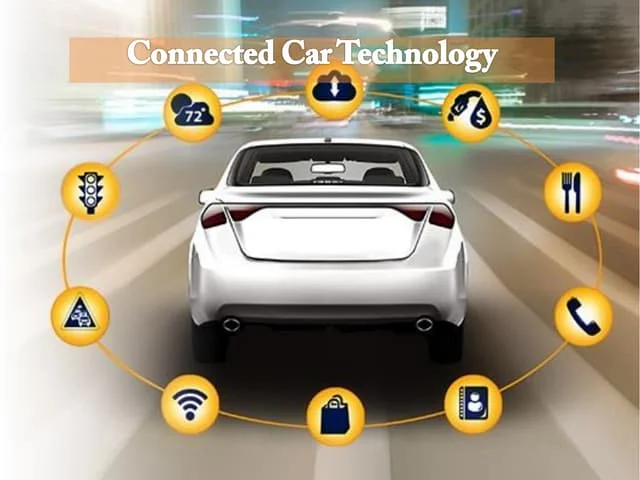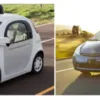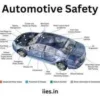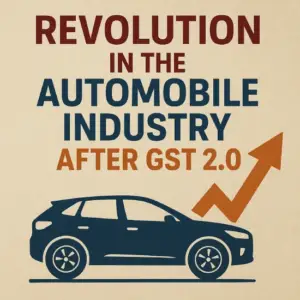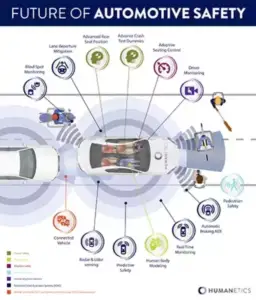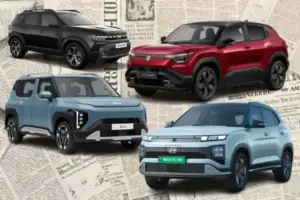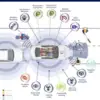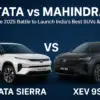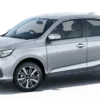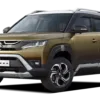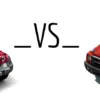Connected cars have transformed the driving experience by integrating vehicles into the digital ecosystem. Using IoT (Internet of Things), these cars enable features such as real-time navigation, predictive maintenance, and remote control via smartphones.
The integration of 5G technology ensures ultra-fast communication between vehicles (V2V) and infrastructure (V2I), enhancing safety and traffic management. Features like over-the-air updates, voice assistants, and AI-powered infotainment systems have made connected cars a technological marvel.
Brands like BMW, Audi, and General Motors are embracing this trend, offering cloud-connected services and personalized experiences. In the future, connected cars will be pivotal in smart city ecosystems, contributing to enhanced mobility and reduced congestion.
The Technology Behind Connected Cars
- IoT Integration:
Connected cars use IoT to enable seamless communication between various systems, including GPS, infotainment, and diagnostics. Sensors embedded throughout the vehicle collect and transmit real-time data for better performance and safety. - 5G Connectivity:
With 5G networks, connected cars achieve ultra-low latency communication. This is critical for vehicle-to-vehicle (V2V) and vehicle-to-infrastructure (V2I) interactions, ensuring real-time updates and enhanced road safety. - Advanced Infotainment Systems:
AI-driven infotainment systems in connected cars provide personalized recommendations for music, routes, and nearby services. These systems are voice-activated, hands-free, and constantly evolving with over-the-air (OTA) updates.
Key Features of Connected Cars
- Real-Time Navigation and Traffic Updates:
Connected cars utilize GPS integrated with live traffic data to offer optimized routes. They can also predict traffic jams and suggest alternatives, saving time and fuel. - Remote Vehicle Management:
Through smartphone apps, drivers can lock/unlock doors, start the engine, or even pre-condition the cabin temperature. These features are especially useful during extreme weather conditions. - Predictive Maintenance:
Connected cars monitor their own health by analyzing data from sensors. They can alert drivers about maintenance needs, such as low tire pressure or oil changes, reducing the risk of breakdowns. - Enhanced Safety Systems:
V2V and V2I communication enable connected cars to anticipate hazards, such as sudden braking by the car ahead or slippery road conditions. These features significantly reduce accident rates. - Smart Integration with Devices:
Connected cars can integrate with smart home devices. For instance, you can turn on your home lights or adjust the thermostat from your car while heading home.
Applications of Connected Cars
- Fleet Management:
Businesses can track their vehicles in real-time, optimize routes, and monitor driver behavior, enhancing efficiency and reducing operational costs. - Ride-Sharing Services:
Companies like Uber and Lyft are integrating connected car technologies to improve navigation, passenger safety, and overall service quality. - Smart City Infrastructure:
Connected cars play a vital role in the development of smart cities. With V2I communication, traffic signals can adjust dynamically based on traffic flow, reducing congestion and emissions.
Challenges and Future Prospects
Despite their advantages, connected cars face several challenges:
- Data Privacy and Security:
With vast amounts of data being transmitted, cybersecurity becomes a top concern. Manufacturers are investing heavily in robust encryption and security protocols to prevent hacking. - Infrastructure Development:
For connected cars to function optimally, cities need to develop smart infrastructure, such as intelligent traffic lights and IoT-enabled road systems. - Cost of Adoption:
The advanced technology in connected cars makes them expensive, but as production scales and technology matures, costs are expected to decrease.
The future of connected cars looks promising. Advancements in AI, edge computing, and satellite technology will further enhance their capabilities. By 2030, it is estimated that nearly all new vehicles will be connected in some form, transforming the driving experience into a seamless integration of mobility and technology.
Conclusion
Connected cars are redefining transportation by making vehicles smarter, safer, and more efficient. They bridge the gap between drivers, vehicles, and the environment, offering a glimpse into the future of mobility. As technology advances, connected cars will not only improve individual experiences but also contribute to a more connected cars.

